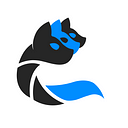Look What You Can Unlock With Cerberus Testing 4.13

Cerberus Testing 4.13 is now out!
A series of new features and improvements are available to continuously improve your test automation journey. This release brings you new capabilities from shadow DOM support to events hooks and connectors.
Cerberus Testing is the 100% open-source test automation framework collaboratively developed since 2013. It provides a reusable solution to automate web, mobile, APIs, desktop, and even database testing.
Our mission is to accelerate your test automation journey by supporting your quality initiatives. The community roadmap focuses on adding the most wanted use-cases and provides easier on-boarding through APIs and user-oriented documentation.
This article focuses on the key features sharing their motivation and implementation guidelines. You can access the new version and changelog anytime here: Cerberus Testing 4.13 release.
Let’s start with the new test automation capability.
Test application using Shadow DOM locators
Ensuring stable test automation is already complex with unstable locators. But shadow DOM ones are even not accessible. These locators are not present in the main document DOM; they are a subtree of elements dynamically rendered.
The support for shadow DOM enables you to test applications using such dynamic locator generation, such as Salesforce. You can still combine these locators with the rest of the framework leveraging the objects, test or data library.
The shadow DOM locators are accessible through the new block “querySelector=<’path’>”. You can use this syntax for all actions and controls that use an identifier like a click, submit, or assertions.
The next feature enables you to react to Cerberus Testing events.
Build reactive test automation with events hooks
A lot of things happen during test automation. Campaigns run, new tests appear, tests succeed while others fail. The capability to react to data in motion is a competitive advantage to support quality at speed.
Cerberus Testing now lets you define specific actions based on specific test automation events. The hooks are available for each status change on the campaign, execution and tests objects. This feature will ease the integration needs, such as sending test execution results to test management platforms like Xray.
You can access the feature by navigating in the menu to “Developer > Event Hooks”. Note that you need the administrator right. The configuration of each hook requires choosing the event and filling in the parameters. The complete documentation is available here.
At the same time, you benefit from new campaign notifications.
Stay tuned on Google Chat and Microsoft Teams
The deployment of Cerberus Testing in different enterprise environments requires more compatibility. The connectors for Google Chat and Microsoft teams were a priority for the community and are now available.
The two connectors are available as new options in the campaign notifications menu. You just need to select the campaign trigger and configure the necessary recipient. The difference with the event hooks is to be available with no admin rights.
The documentation is also evolving to ease your journey.
Access step-by-step tutorial by use-cases
Different people have different needs. Effective collaboration on test automation enables us to perform faster and better software delivery cycles. We therefore improve the information required by the profile.
The centralized documentation is now split into three main parts:
- User documentation: containing the onboarding guide.
- Administration documentation: for the management of Cerberus.
- Use-case documentation: provides step-by-step tutorials.
You can access these portals through the “Help” menu to browse the table of contents depending on your needs. Feel free to contribute or share your feedback on the community slack. You can see it live in the QA environment here.
The last feature aims to simplify integrations with Cerberus Testing.
Integrate faster with the public API portal
A platform enables companies to survive in the digital ecosystem. Organizations can develop more opportunities by facilitating the connections of users and partners with their services. Test automation is no exception and APIs are essential for a platform.
Cerberus Testing already had APIs available and documentation on the main domains supporting CI/CD triggering for instance. The new public API portal enables the integration with the most valuable solutions in the ecosystem.
The API portal is available through the “Developer” menu as “Swagger API”. You then access the different endpoints with their respective documentation and examples. Have a look at the portal in the QA environment here.
Feel free to contact us for partner integration.
Accelerate your test automation with Cerberus Testing
Cerberus Testing 4.13 offers an extended test automation capability. Benefit from a ready-to-use framework for your various test techniques, including shadow DOM ones.
The documentation and public API portal will be continuously enriched based on the use-cases and the community. It is now the time to improve Cerberus Testing as a true test automation platform.
Interested to play with? Start Now for Free.
Clap this article if you liked it ;)
